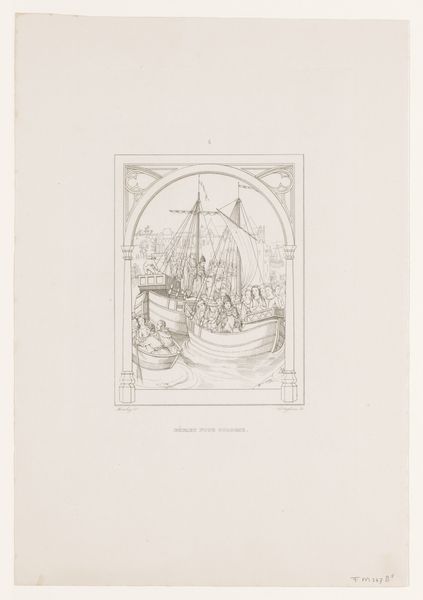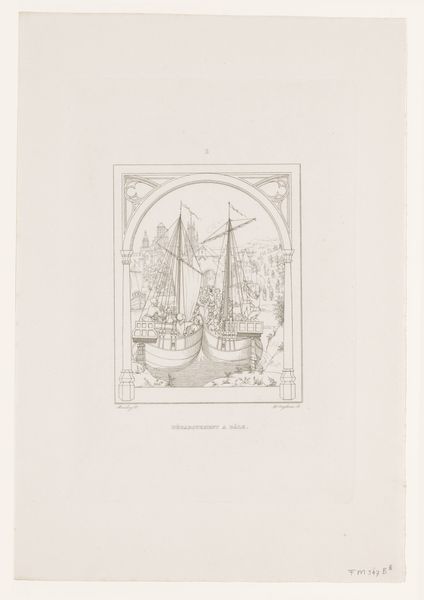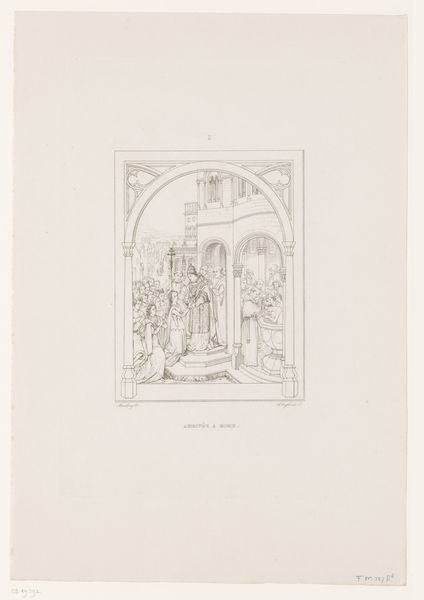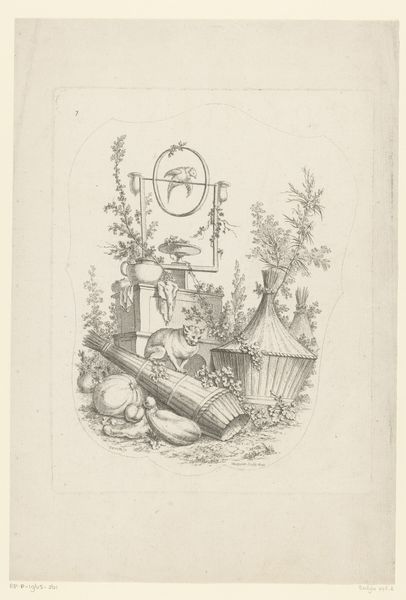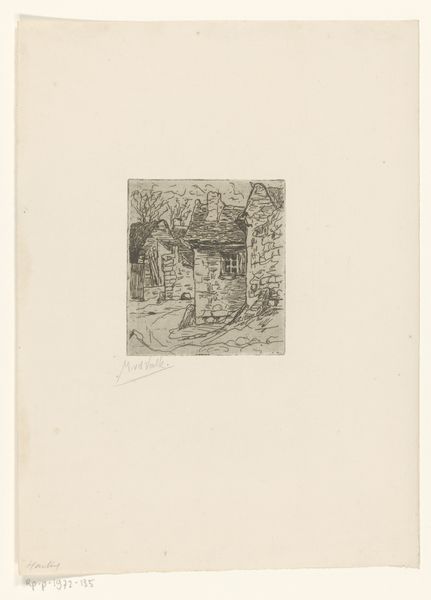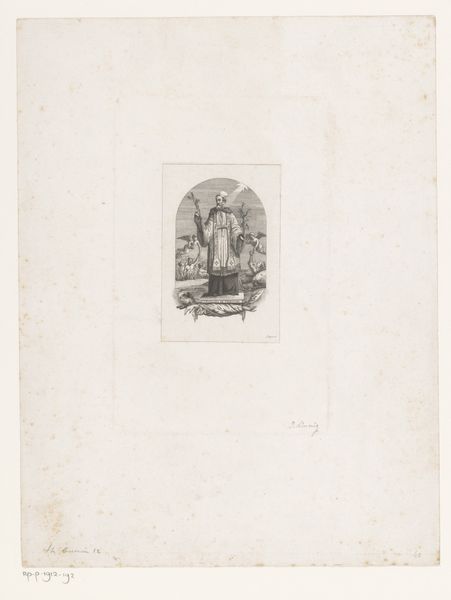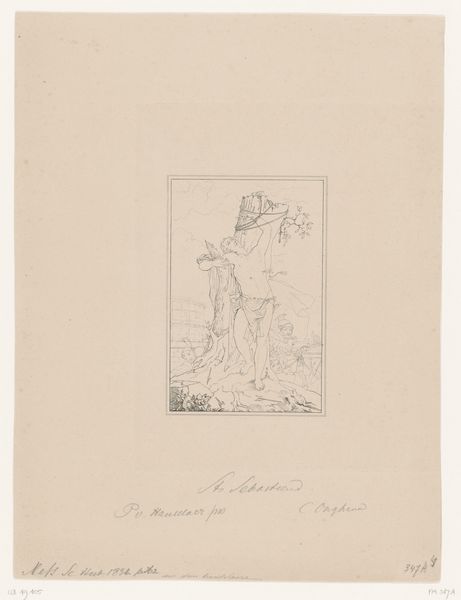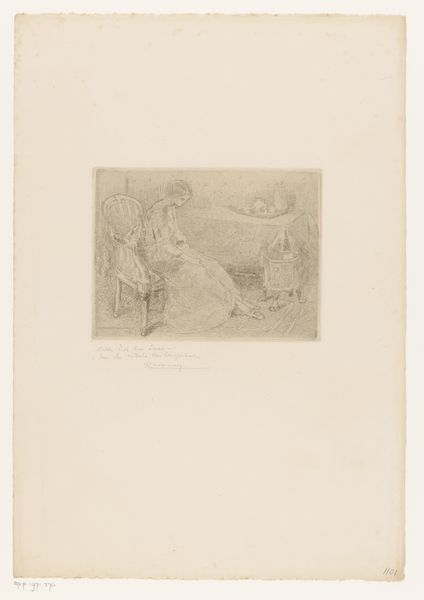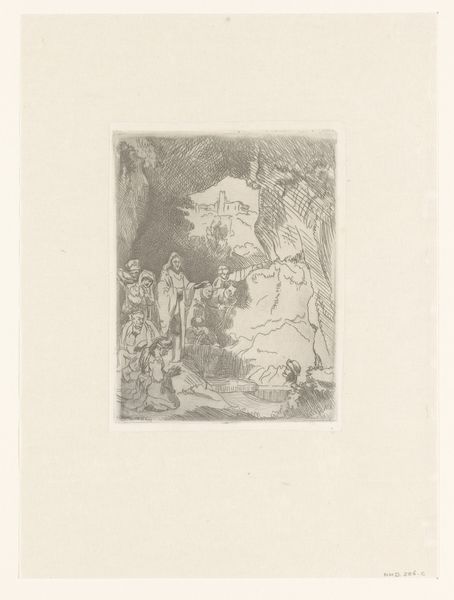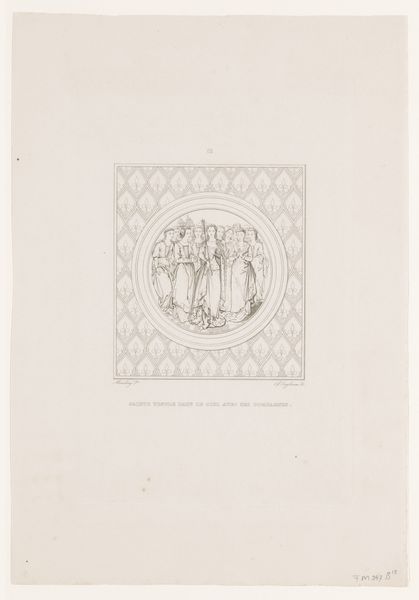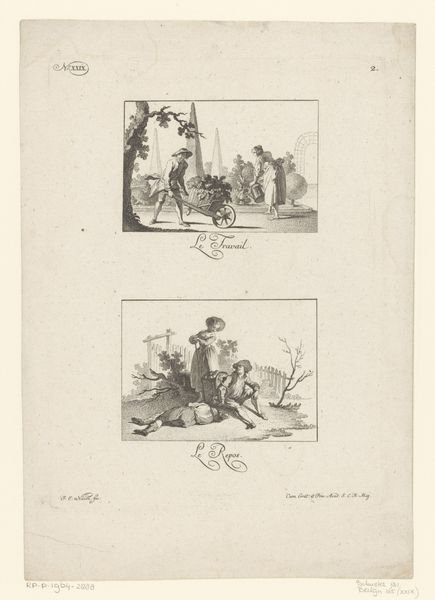
print, etching
#
ship
# print
#
etching
#
pencil sketch
#
landscape
#
etching
#
history-painting
Dimensions: height 275 mm, width 187 mm
Copyright: Rijks Museum: Open Domain
Charles Onghena made this drawing, "Moord op het reisgezelschap van de H. Ursula," by using graphite and lead on paper. The scene is bordered by an architectural frame, like a window, and rendered in a monochromatic palette of blacks, whites, and grays. The violence, the dramatic event, unfolds within the gentle curve of the arch, a composition that creates an emotional response. The artwork's structure uses a series of lines and forms to explore themes of brutality, mortality, and power. Notice how the linear quality of the drawing reinforces the narrative. It’s as if the architectural frame and the medium itself—graphite and lead—act as structural elements that reflect broader cultural anxieties. The very act of depicting such a massacre on paper could be viewed as an effort to contain or process collective trauma through symbolic representation. Consider how the formal elements of the artwork operate within the context of historical and philosophical discourse. This piece challenges us to question the traditional narratives of heroism and violence, and to recognize that art serves as a site of ongoing interpretation and re-interpretation.
Comments
No comments
Be the first to comment and join the conversation on the ultimate creative platform.
